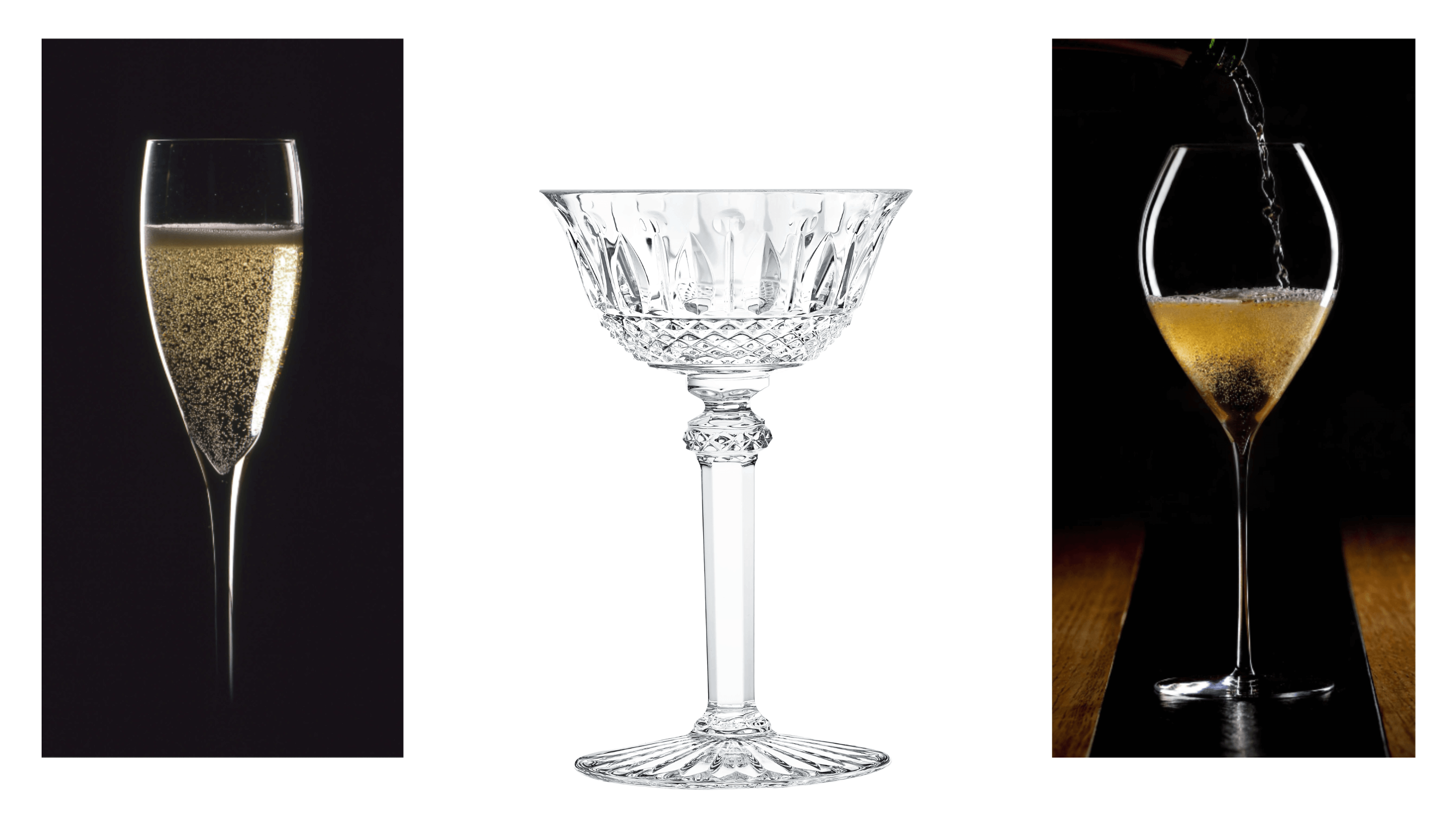
An upright champagne flûte—your average drink, at your average art exhibition opening.
An opulent crystal coupe by Saint-Louis, Tommy collection—a beauty, a bijoux for home entertaining.
An ultralight wine glass by Lehmann—on the lips of cellar masters and connoisseurs all over Reims.
So which is the best way to imbibe? Taste, style, sociability, and the beauty of the bubble are personal preferences to consider.
Lehmann, based in Reims, co-designs glasses with the industry’s top practicians; its Signature P. Jamesse Collection engages sommelier and champagne specialist Philippe Jamesse for the task. “It [the glass] allows bubbles to form and make sense,” he explains. “We need a surface head that allows aromas to be liberated progressively.”
Champagne is wine, after all. Some connoisseurs forget flûtes and special champagne tasting glasses altogether and choose, simply, a glass intended for white wine—especially for tasting blanc de blanc champagnes, which are considered “lean”. Yet a white wine tasting glass has a lip with a smaller radius than the base of the glass. Specialized champagne glasses feature a slightly wider lip, and an ever so slightly generous, egg-like bowl. Complexity merits a champagne glass.
French fashion designer Alexis Mabille sent champagne glasses down the runway of his Haute Couture Fall-Winter 2023-24 show in Paris. He took the looks into evening, entitling the collection “Mondaines”. Even manicures featured a lacquered crystalline droplet; one per nail.
Like all good style, a coupe is to be consumed voraciously. French royalty would drink a coupe’s serving in one swallow, then turn the glass upside down in a bowl to let the sediment drain. A la mode in the 1920s, then the 1950s, there is something indelibly at the apex of glamorous home entertaining. Leisurely. Yet aromas and bubbles escape rapidly in its wide-open design. Very rapidly. Real champagne people don’t drink from coupes. Fast drinkers do.
That crafty 17th century monk who created the very method for making champagne, Dom Pérignon, is said to have felt the more bubble, the better. He relished to “watch the dance of the sparkling atoms.”
If bubble is the attraction, flûtes are fun. Any champagne glass with design dignity has a small scratch at the bottom, called a “sparkling point”, that agitates and aids in the fizziness and quick development of bubbles. “Its slimline shape is great to encourage the bead in champagne,” notes renowned glassmaker Riedel, who was the world’s first creator of machine-made, varietal-specific glassware, including flutes with the Vinium collection in 1986. They have since been precursors in more specialized champagne tasting glasses with the Veritas collection in 2013, verging far from the flûte’s limited aroma release.
Flûtes have the merit of maintaining effervescence longer, as well as concentrating its rise in a narrower channel. This is useful when glasses of champagne are poured and left sitting for awhile before service; it helps avoid the faux pas of…flat.
“Pleasure without Champagne is purely artificial.”
Oscar Wilde